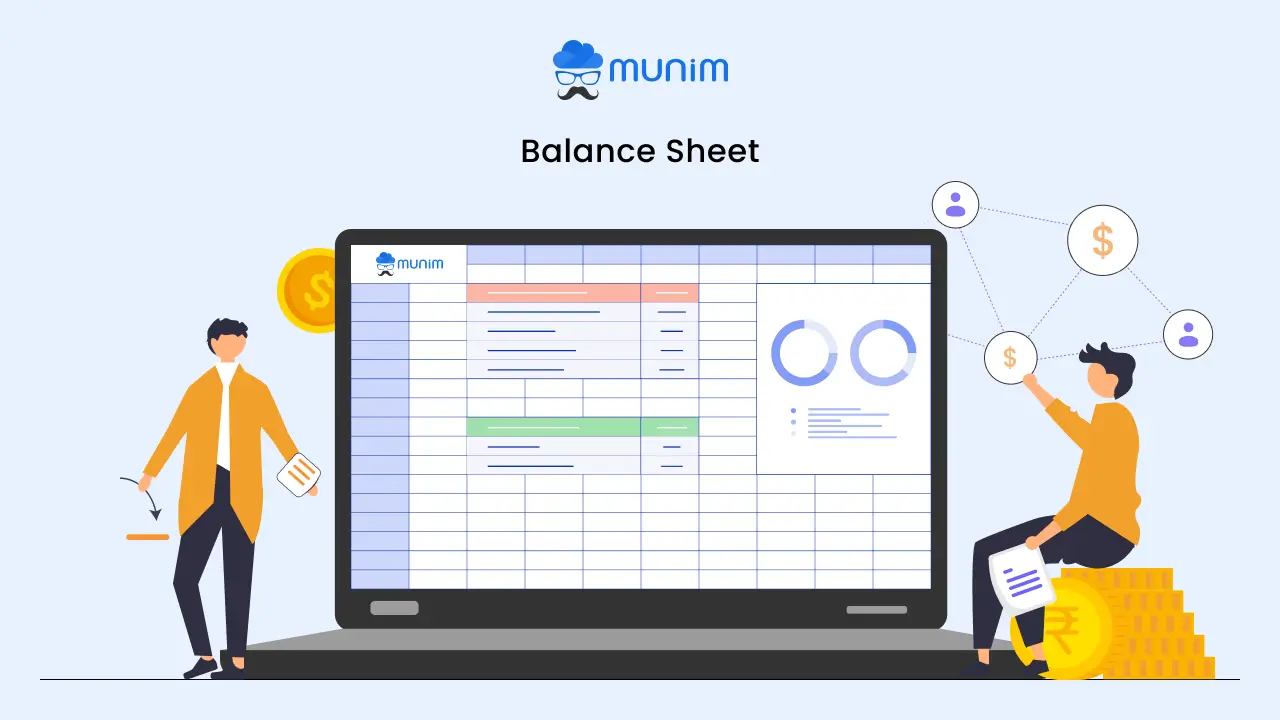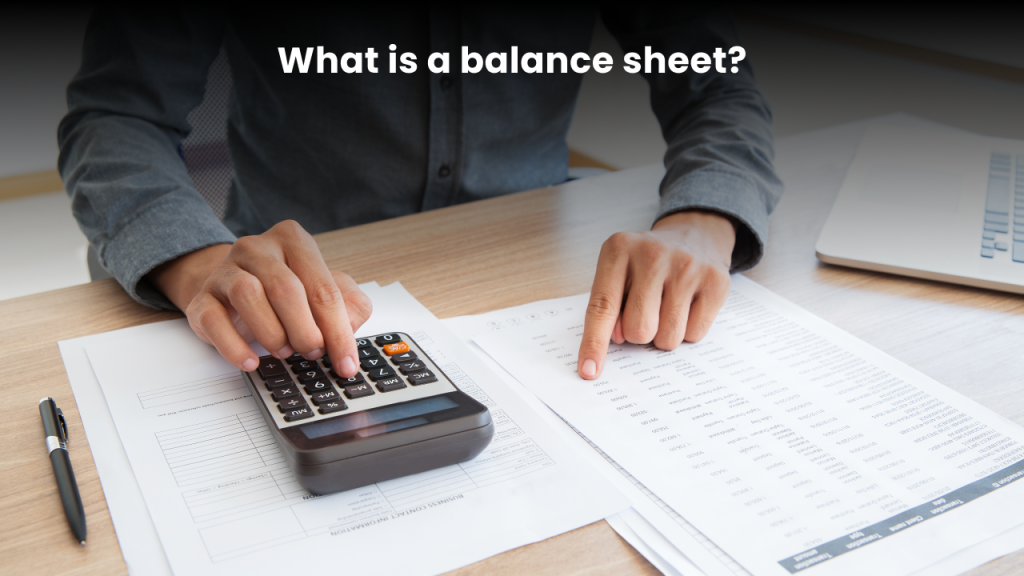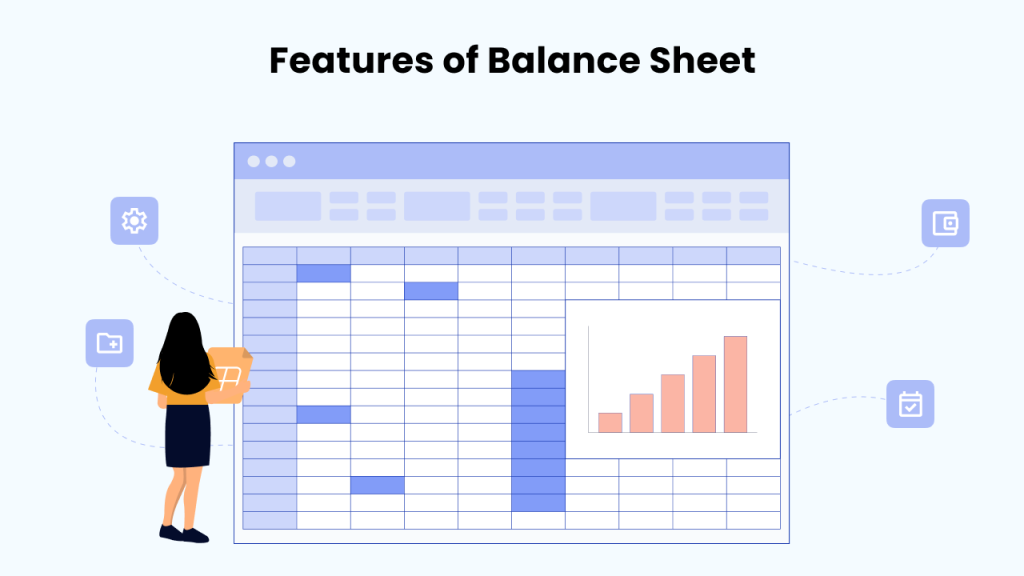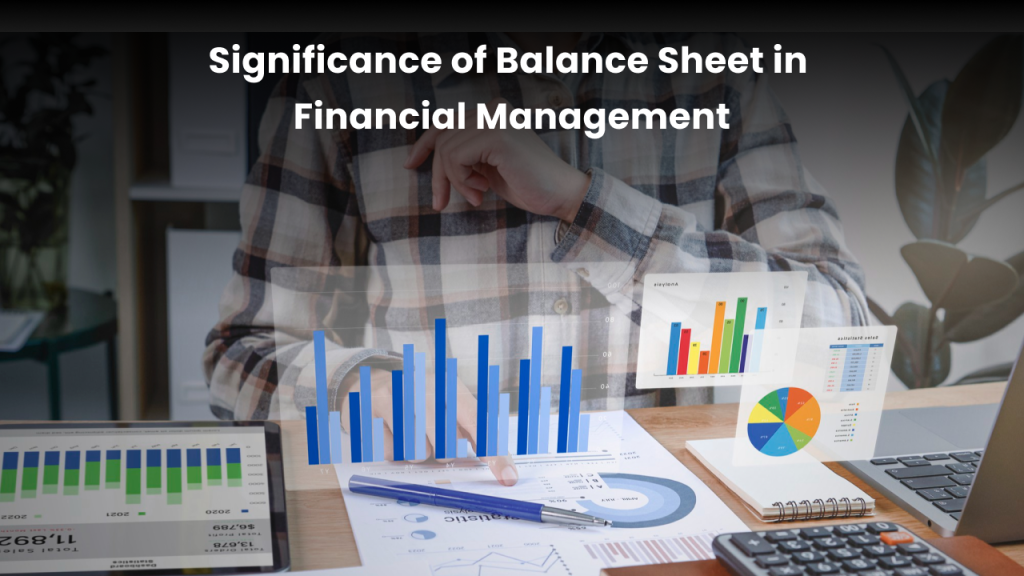Significance of Balance Sheet: Why it Matters in Financial Management

A balance sheet depicts a company’s financial health, liabilities, assets, and shareholder’s equity at a particular point or time. Let’s dive deep into the basic understanding of the concept.
What is a Balance Sheet?

Balance, or the ledger sheet, is a financial statement that shows a business’s economic health. It reveals the company’s assets and liabilities for a particular time period. This financial report assists creditors and investors in understanding the company’s financial status.
A balance sheet format generally has three main sections:
- Assets- Cash, buildings, or inventory fall into this category.
- Liabilities- Debt and obligations are liabilities.
- Shareholder’s Equity-It depicts the owner’s interest in the business.
The sheet is prepared by the company’s financial professionals or accountants. It involves collecting financial information and organizing it into a standard format.
Components of a Balance Sheet
- Assets
- Assets are listed from top to bottom in their liquidity order so that they can be easily converted to cash. Assets are components owned by the company.
- There are two types:
- Current Assets- These assets can be converted into cash within one year or less.
- Non-current Assets- These assets cannot be converted into cash early.
- Liabilities
- Liabilities are obligations owed to external parties.
- Liabilities refer to the money paid by a company to the other parties.
- Current liabilities have to be paid within one year.
- The current liabilities are listed in the order of their due dates.
- Long-term liabilities are due at any point after one year, unlike the current ones.
- Shareholder Equity
- Shareholder equity in a balance sheet refers to the attributes of the business owners or its shareholders.
- It is equivalent to the total company assets subtracted from the liabilities or debt to be paid to non-shareholders.
- Thus, they are also considered as net assets.
What are the Key Features of a Balance Sheet?

- It offers a snapshot of the financial position for a specific time frame.
- It gives a dual presentation of assets,liabilities and shareholder equity.
- You can get access to the historical information with the sheet.
- It has a fixed format and structure.
- The sheet is based on the fundamental accounting equation.
- You can leverage the sheet for comparative analysis and insights.
- It also caters to disclosures of accounting policies.
- It is a crucial component of a financial statement.
Types of Balance Sheet
- Classified Balance Sheet
This sheet caters to assets, liabilities, and equity. It separates these assets into specific categories. This helps the companies to get a detailed and organized overview of their financial position.
- Unclassified Balance Sheet
An unclassified balance sheet does not separate the assets into categories. These sheets represent the components in a general and less detailed format.
- Comparative Balance sheet
The horizontal balance sheet presents financial data in a row-by-row format. It lists assets, liabilities, and equities sequentially from left to right. Emphasizing chronological order, it tracks changes in the components.
- Vertical Balance Sheet
A vertical balance sheet format depicts the financial data in a columnar format. It represents the assets, liabilities, and equities in distinct columns. It provides a clear and structured representation of the proportions of every component.
- Horizontal Balance Sheet
The horizontal balance sheet presents the financial data in a row-by-row format. It lists assets, liabilities, and equities sequentially from left towards right. Emphasizing on the chronological order, it tracks changes in the components.
- Consolidated Balance Sheet
A consolidated statement refers to financial data that offers complete information about the parent company and its affiliates. It delivers a unified view of the company’s financial performance for the consolidated entity.
Significance of the Balance Sheet in Financial Management

- Assessing Financial Health and Stability
- A Balance sheet snaps a company’s financial performance, health, and stability.
- It formulates details about assets, debts, and equities owned by a company.
- Analyzing these components helps the stakeholders and owners measure the company’s performance.
- Growing asset values, cash, and low debt indicate the company is stable and can handle challenges.
- Declining asset values with more debts depict trouble for the company.
- This helps the stakeholders to make wise decisions.
- Investment Opportunities
- Balance sheets assist in assessing assets like properties, equipment, and inventory to identify their potential to generate returns.
- It helps to understand the company’s capital structure and debt-to-equity ratio to gain insights into financial stability and risk level.
- Combining these financial statements helps to make informed investment decisions and spot opportunities that align with the investment goals.
- Strong assets and steady growth in equity are treated as good investment opportunities.
- Excessive debt and declining equity raise concerns about the company’s financial stability and long-term sustainability.
- Creditworthiness Assessment
- The balance statements allow the lenders and creditors to assess the company’s creditworthiness.
- It helps companies examine their assets, liabilities, and equity to determine whether they can repay their debts and meet their financial obligations.
- A strong statement of financial position with good liquidity gives confidence in extending the credit.
- A weak sheet with increasing debt and deteriorating financial levels affects performance.
Let’s Conclude
Hopefully, the guide to the balance sheet has helped you understand its basics and importance in financial management. For more blogs, stay tuned with us. If you have any queries, shoot them in the comment section below. We will surely answer them.
If you are looking for the best accounting and billing software to manage your balance statements, Munim is the right choice. Want to explore Munim GST accounting software now, Request a demo from our experts. Hurry up! Try see how Munim benefits your business.
- Who prepares the balance sheet?
For small companies, either the owner or the bookkeeper prepares the balance sheet. These sheets are created internally for mid-sized companies and then submitted to the external accountant for verification. Public companies get external accountants to audit and prepare the balance statements.
- What is the balance sheet formula?
Balancing a company’s assets with its liabilities and equities is crucial for calculating the formula, which is total assets = total liabilities + total equity.
- Can I use Munim to create the sheets?
Yes, Munim accounting and billing software can assist you in creating the balance statements with ease.






